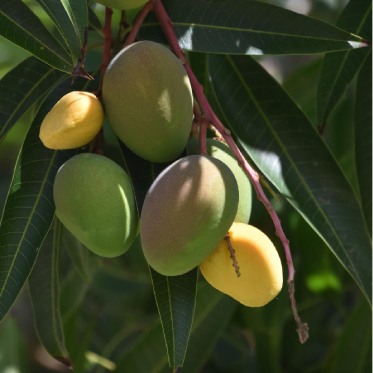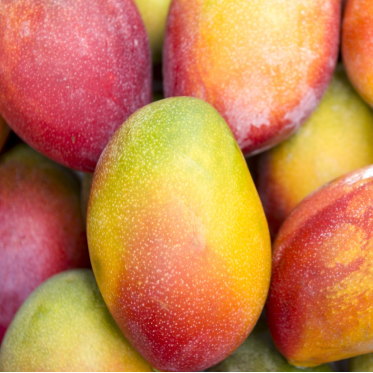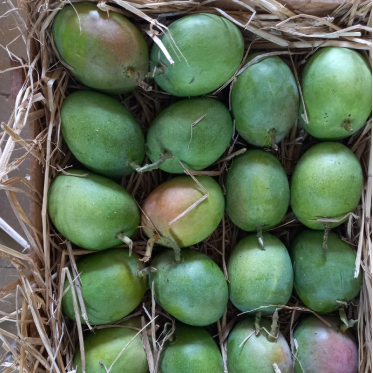Packaging standards for Alphonso mangoes, whether for domestic or export purposes, are crucial to ensure quality, freshness, and compliance with regulations. Here’s a breakdown:
- Domestic Packaging Standards
For local markets within India, packaging standards focus on ensuring that mangoes are transported safely while maintaining quality.
Packaging Material:
- Crates or Cartons: Corrugated fiberboard cartons or wooden crates with proper ventilation are commonly used.
- Plastic Trays or Crates: Stackable, reusable plastic crates provide durability and protect mangoes during transit.
- Cushioning Material: To prevent bruising, materials like paper shreds, soft tissues, or hay are used.
Packaging Weight:
- Packaged in boxes of 5 to 10 kg for easier handling and distribution.
Labelling:
- Clear identification of the variety (Alphonso), grade, and weight.
- Date of packaging and origin details (e.g., region or farm).
Transportation Standards:
- Transported in well-ventilated vehicles to avoid overheating.
- Avoid stacking beyond the recommended load to prevent damage.
- Export Packaging Standards
Export standards for Alphonso mangoes are stricter due to international requirements and the need for long-distance transit.
Packaging Material:
- Corrugated Fiberboard Cartons: High-strength, food-grade cartons designed for international transport.
- Individual Wrapping: Each mango is wrapped in tissue paper or foam nets to prevent damage.
- Ventilation: Boxes have small holes for airflow to reduce moisture buildup and ripening.
Packaging Size and Weight:
- Standard box sizes are usually 2.5 kg, 4 kg, or 5 kg, depending on the buyer’s requirement.
- Mangoes are graded and packed by size or weight for uniformity.
Labelling Requirements:
- Must comply with the regulations of the importing country, including:
- Variety name: Alphonso.
- Grade: Based on size and quality.
- Net weight.
- Producer/Exporter details.
- Country of origin: “India.”
- Compliance logos (e.g., FSSAI, APEDA certification).
Compliance with International Standards:
- Follow guidelines set by organizations like:
- APEDA (Agricultural and Processed Food Products Export Development Authority) in India.
- Codex Alimentarius standards for food safety.
- Specific requirements of importing countries (e.g., USDA for the USA or EU regulations).
Cold Chain Requirements:
- Export mangoes often require pre-cooling (13–15°C) and transport in refrigerated containers to maintain freshness.
Additional Considerations:
- Irradiation & Pest Control: Mangoes destined for some countries (like the USA or Japan) must be irradiated or treated to meet phytosanitary standards.
- GlobalGAP Certification: Ensures good agricultural practices for export markets.
- Organic Mango Standards: If labeled organic, compliance with organic certification bodies is mandatory.
Summary Table
Parameter | Domestic | Export |
Packaging Material | Wooden/plastic crates, corrugated boxes | Food-grade corrugated boxes with vents |
Weight per Box | 5–10 kg | 2.5–5 kg |
Cushioning | Hay, paper | Tissue, foam nets |
Labelling | Basic: variety, weight, origin | Comprehensive: variety, grade, country, etc. |
Special Requirements | None | Cold chain, irradiation, certifications |
By adhering to these standards, producers and exporters can ensure that Alphonso mangoes reach consumers in excellent condition, both locally and internationally.
Export and packaging standards of alphonso mango pulp
The export and packaging standards for Alphonso mango pulp are critical for maintaining its quality, freshness, and compliance with international regulations. Here’s an overview:
- Packaging Standards for Alphonso Mango Pulp
Packaging Material:
- Aseptic Bags:
- Made of food-grade materials, usually multilayered with aluminum foil or high-density polyethylene (HDPE).
- Placed inside sterilized drums for bulk packaging.
- Cans:
- Tin cans with epoxy coating to prevent reactions with the pulp.
- Typically used for retail packaging.
- Glass Jars or Bottles:
- Suitable for high-end retail markets; ensures extended shelf life.
- Flexible Pouches:
- Food-grade retort pouches or laminated pouches for small retail portions.
Packaging Sizes:
- Bulk Packaging:
- Aseptic bags in drums (200–220 kg capacity).
- HDPE barrels or steel drums.
- Retail Packaging:
- Cans, jars, or pouches ranging from 100 g to 1 kg.
Sealing and Sterilization:
- Containers are sealed hermetically to prevent contamination.
- Aseptic filling systems ensure that the product remains sterile during packaging.
- Export Standards for Alphonso Mango Pulp
Product Specifications:
- Quality:
- Free from artificial colors, flavors, and preservatives (unless specified).
- Brix value (sugar content): Typically 16–18° Brix for Alphonso mango pulp.
- Acidity: Around 0.5–0.8% (as citric acid).
- pH: 3.5–4.0.
- Appearance:
- Bright golden-yellow, smooth, and uniform consistency.
- Free from any foreign matter or black specks.
Labeling Requirements:
- Labels must comply with the importing country’s standards and include:
- Product name: “Alphonso Mango Pulp.”
- Brix value and acidity.
- Net weight.
- Manufacturing and expiry date.
- Batch/lot number.
- Storage instructions (e.g., “Store in a cool, dry place”).
- Country of origin: “India.”
- Certifications like FSSAI, FDA, or equivalent.
Storage and Shelf Life:
- Shelf life of 18–24 months for aseptic pulp.
- Stored at temperatures between 4°C to 25°C, depending on packaging type.
- Regulatory and Quality Standards for Export
- Hygiene Standards:
- Comply with HACCP (Hazard Analysis and Critical Control Points) for food safety.
- Processed in ISO-certified facilities.
- Phytosanitary Certification:
- Ensure compliance with the importing country’s plant health regulations.
- Codex Alimentarius Standards:
- Ensure the product meets global food safety and quality norms.
- Certifications:
- APEDA: For export promotion and certification.
- FDA Approval: Required for the U.S. market.
- EU Standards: Compliance with European food safety directives.
- Halal/Kosher Certification: Based on target markets.
- Logistics and Transportation
- Cold Chain Requirements:
- Aseptic mango pulp can be transported without refrigeration, but maintaining a stable temperature (below 25°C) is crucial.
- Non-aseptic pulp may require refrigerated transport (0–5°C).
- Container Standards:
- Bulk shipments often use food-grade, temperature-controlled containers.
- Retail packs are shipped in secondary cartons with moisture barriers.
Summary Table
Aspect | Details |
Packaging Material | Aseptic bags, cans, glass jars, retort pouches |
Packaging Sizes | Bulk: 200–220 kg; Retail: 100 g–1 kg |
Storage Temperature | 0–25°C depending on packaging |
Labeling Requirements | Product name, weight, Brix, origin, certifications |
Shelf Life | Aseptic pulp: 18–24 months; Non-aseptic: 6–12 months |
Regulations | HACCP, FSSAI, FDA, APEDA, EU standards |
By adhering to these standards, exporters can ensure Alphonso mango pulp reaches international markets in excellent condition while meeting all legal and quality requirements.










